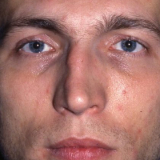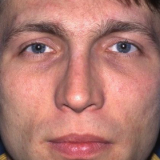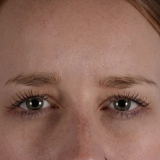One of the most common questions we get about any of our facial plastic surgery procedures is about the recovery process. When we talk about the recovery period for rhinoplasty, we have to consider whether this is a first-time surgery or a revision. In general, first-time rhinoplasty is “easier” to recover from than a revision, though every patient is different. At Colorado Facial Plastic Surgery in Englewood, CO, our expert team is ready to answer any questions or address any concerns you may have about our facial reshaping procedures, such as rhinoplasty.
With any significant facial plastic surgery, there are many questions to consider before deciding to move forward with rhinoplasty. Let’s consider some of the specifics:
Contents
- 1 How much pain will I experience after Rhinoplasty?
- 2 How soon can I exercise after rhinoplasty surgery?
- 3 What should I eat during rhinoplasty recovery?
- 4 When can I shower or bathe after rhinoplasty?
- 5 What is a proper skin care regimen following rhinoplasty surgery?
- 6 When can I start wearing glasses again?
- 7 When should I schedule follow-up appointments following rhinoplasty surgery?
- 8 To find out more about rhinoplasty, contact our expert facial plastic surgery team in Englewood, CO today
How much pain will I experience after Rhinoplasty?
Most patients do not complain of pain after surgery. If rib or ear cartilage is taken, the pain can be described as uncomfortable for several days. Instead of pain, many describe pressure or congestion within the nose and sinuses. Although narcotic pain medication is prescribed for breakthrough pain, it is recommended to take Tylenol Extra Strength before. NSAIDs, such as Aleve, Motrin, etc., are best avoided for 72 hours after surgery to reduce the risk of bleeding.
Anesthesia: The after-effects of anesthesia vary by patient. In general, longer surgeries can result in more symptoms such as nausea, vomiting, and fatigue. These tend to improve within 48 hours after the surgery.
Bruising: This can vary from no visible bruising to noticeable “black-and-blue” eyes, depending on the amount of work performed. This is often caused by “breaking” the nasal bones, which causes blood to spread underneath the skin toward the eyelids (the thinnest skin in the body). Bruising can be improved with the use of herbal supplements like Arnica and interventions such as Intense Pulsed Light. In most cases, bruising resolves within 2 – 3 weeks after surgery.
Swelling: Because the vast majority of our rhinoplasties are performed “open,” swelling tends to be more significant. After the cast and tape are removed at one week, the nose will demonstrate its form, though healing will be less than 10% at that time. Over the following weeks and months, the nose will continue to “shrink” and refine itself toward its final form. Thicker skin tends to reduce swelling more slowly. At three months, a substantial improvement in swelling can be seen. This process will continue through the one-year mark and onward. Steroid injections and taping will help to control swelling.
How soon can I exercise after rhinoplasty surgery?
The first few weeks after rhinoplasty surgery are critical for swelling. There is no limit on the amount of walking and light activity a patient may perform. If rib cartilage is taken, the patient should perform deep breathing exercises throughout the first week to assist with the reduction of muscle tension. But, heavy lifting or straining, which may raise the heart rate and blood pressure, is best avoided for 3 – 4 weeks in order to prevent further swelling, bleeding, infection from sweating, or shifting of the nasal bones. After one month, most patients are released to full activity.
What should I eat during rhinoplasty recovery?
A diet that is low in salt and full of ample hydration is most important. Salt causes the body to retain fluid. Hydration allows the body to adequately remove all the byproducts of surgery. Lean proteins such as chicken, complex carbohydrates, and green, leafy vegetables can help reduce inflammation and promote ideal healing.
When can I shower or bathe after rhinoplasty?
For the first week after surgery, tape and a cast will be over the nose. It’s important to keep water off of these to avoid them falling off. Showering from the neck down is acceptable. The hair can be washed “salon-style,” and the face cleansed with gentle washing. Once the cast and tape are removed, regular bathing can resume.
What is a proper skin care regimen following rhinoplasty surgery?
External: After the tape and cast are removed, for the next week, cleaning the surface of the nose is very important. A small number of sutures will be removed, and the rest will dissolve over several weeks. Alcohol pads are often used, which help to remove the surgical glue, blackheads, and dried skin. At the second visit, the patient will be allowed to resume the usage of makeup and normal skin care products. A scar cream will be initiated at the second visit and continued for several months to allow for optimal healing.
Internal: To promote the best healing, moisture inside the nose is imperative. Antibiotic ointment, saline sprays, and saline soaks will be recommended multiple times per day for several weeks. A humidifier in the house and bedroom will help to decrease crusting, which can lead to infection. Patients report improved breathing, comfort, and healing the more “wet” their nose is during the healing process.
When can I start wearing glasses again?
If the nasal bones are narrowed, glasses, or sunglasses, should not be used until cleared by the surgeon. Usually, after four weeks, the nasal bones and bridge have stabilized, and usage of glasses can resume. If available, contacts are encouraged until then. If not an option, a taping technique can be demonstrated to allow the glasses not to “rest” on top of the bridge.
When should I schedule follow-up appointments following rhinoplasty surgery?
As mentioned, the nose changes over time. Follow-up is incredibly important to help mold the nose toward its final result. Visits will be weekly in the beginning following surgery and spaced further out over time. Eventually, the patient may only visit yearly or as needed to ensure that there are no problems with the nose, such as asymmetries or breathing trouble. The relationship with the rhinoplasty surgeon should be long-term to ensure the best result.
To find out more about rhinoplasty, contact our expert facial plastic surgery team in Englewood, CO today
This list addresses a majority of the questions we get about the recovery process in rhinoplasty. One of the most critical things to remember is that rhinoplasty is a journey. The nose continues to refine itself, and swelling is a normal part of the process. With adequate follow-up and attention to aftercare, the chances for an excellent result are much higher.
At Colorado Facial Plastic Surgery in Englewood, CO, our surgeons specialize in facial procedures with double certifications from the American Board of Otolaryngology-Head & Neck Surgery (ABOHNS) and the American Board of Facial Plastic and Reconstructive Surgery (ABFPRS). Contact us today to learn more about the rhinoplasty options we offer.







